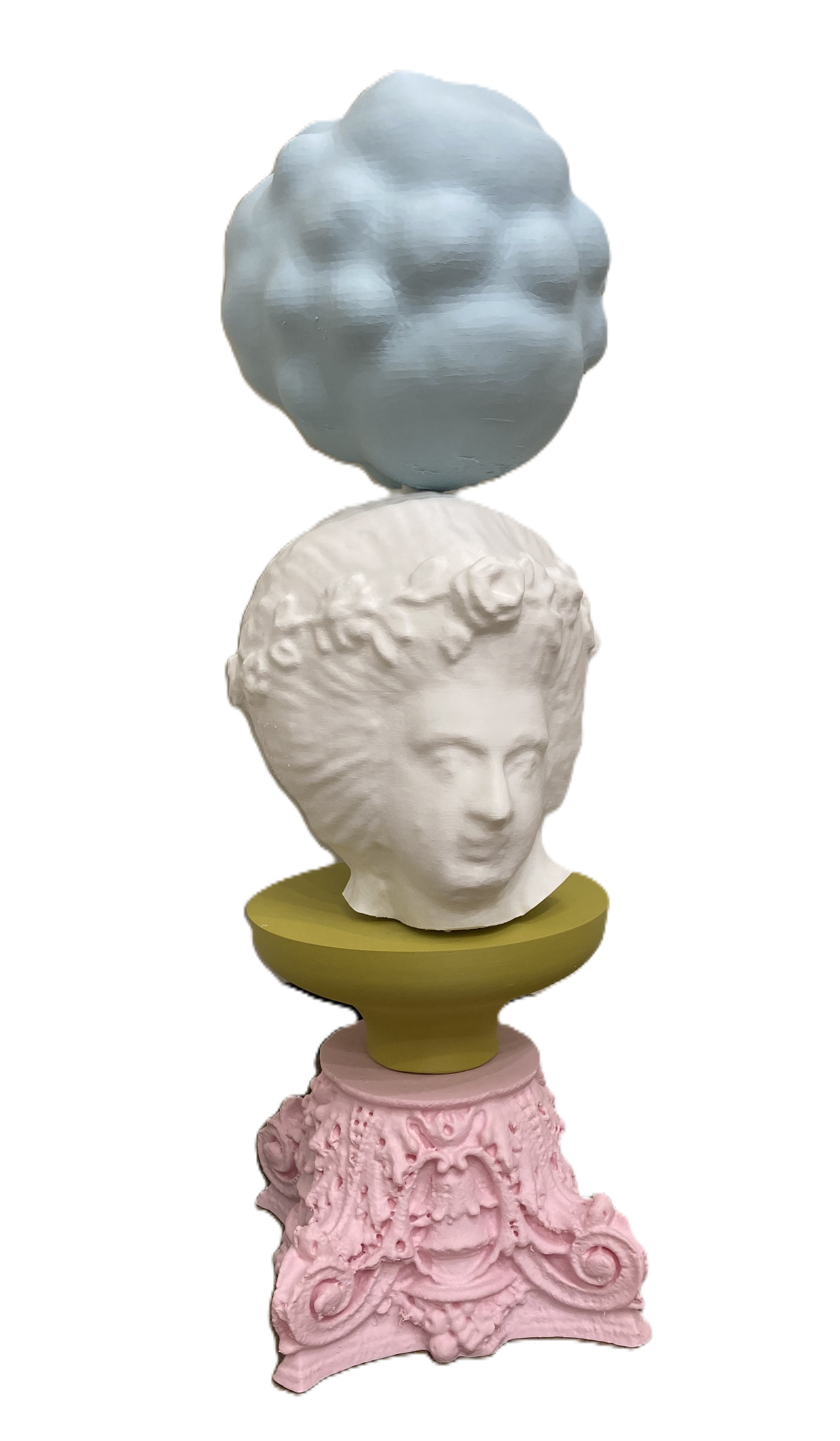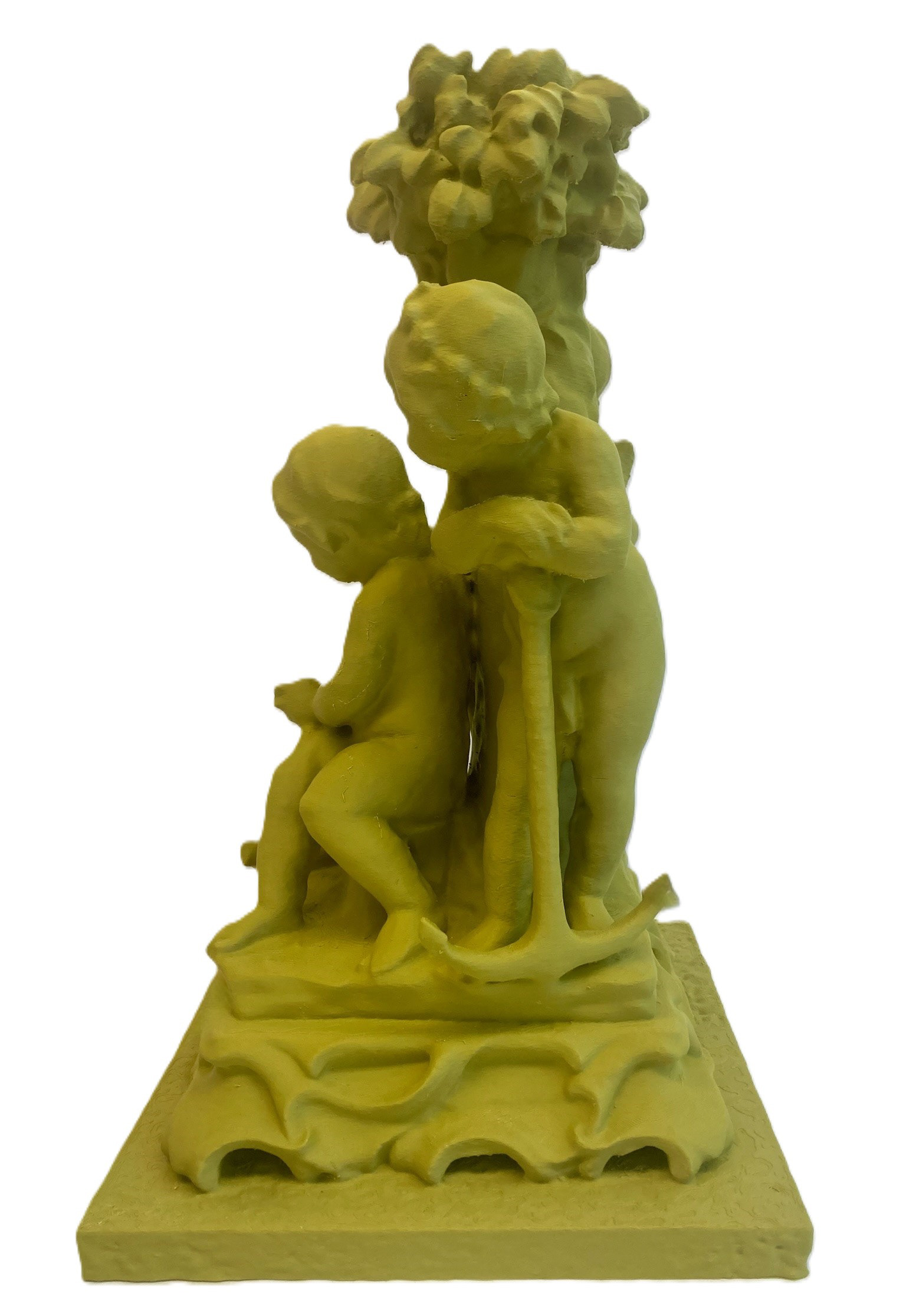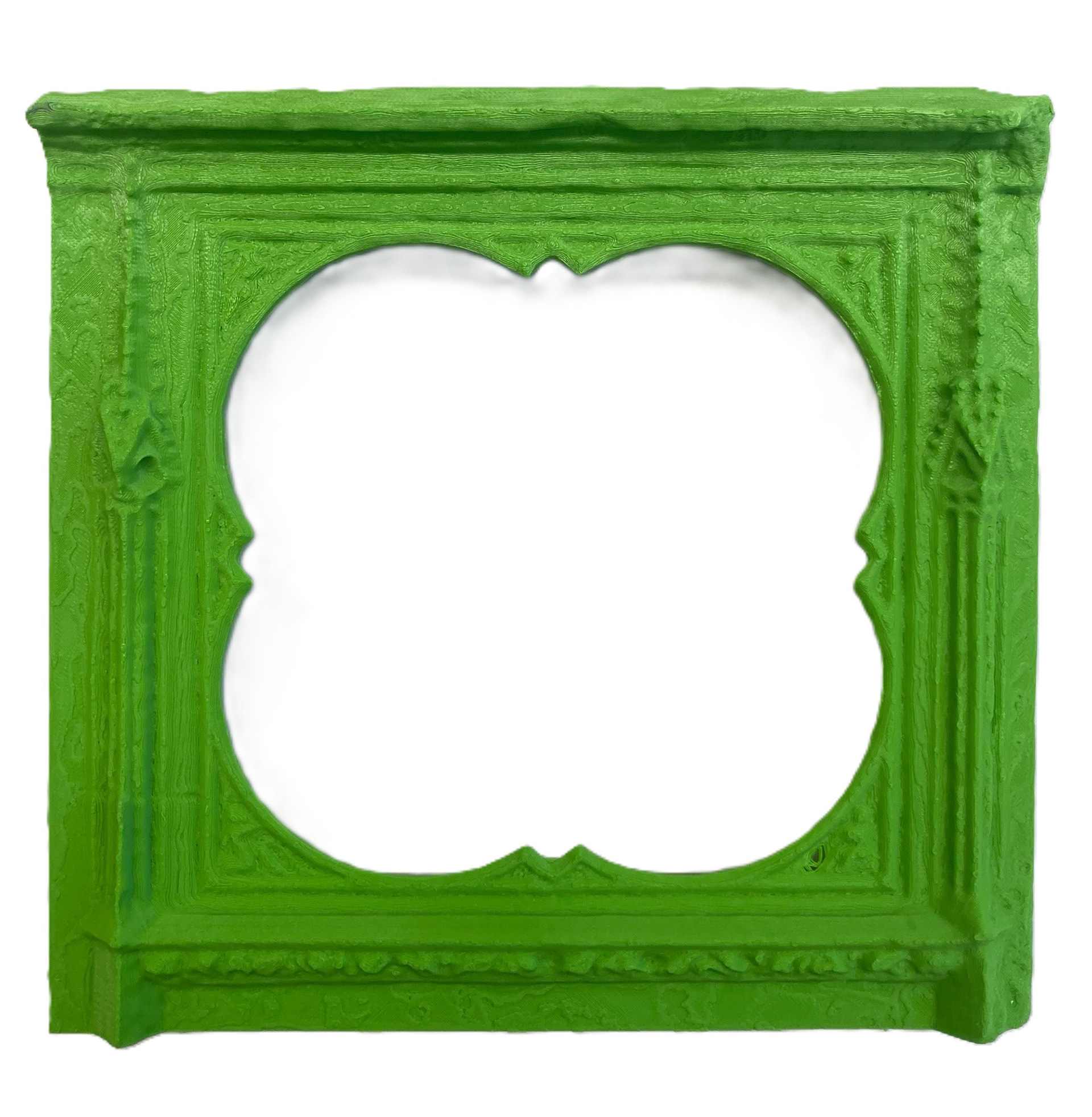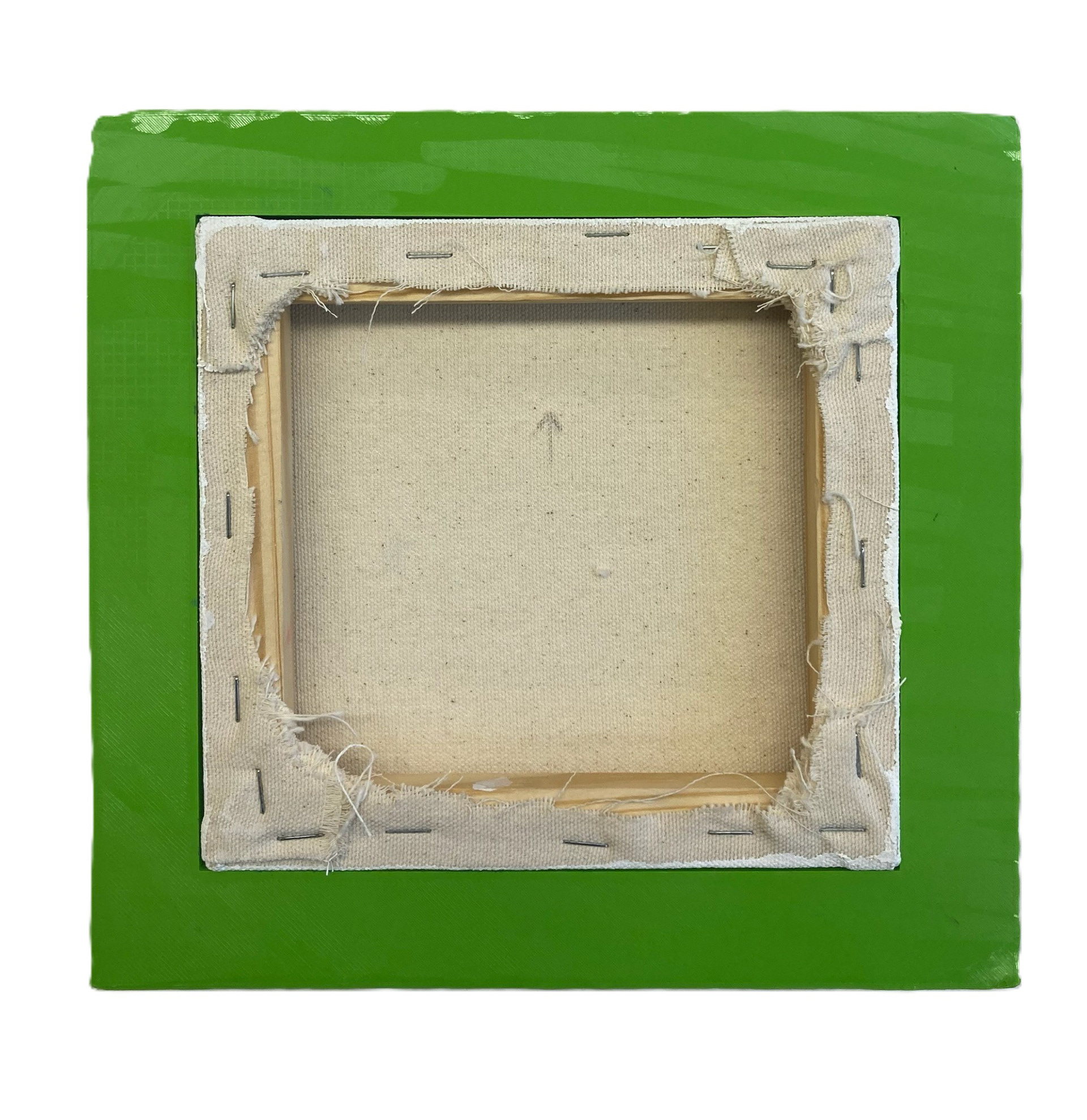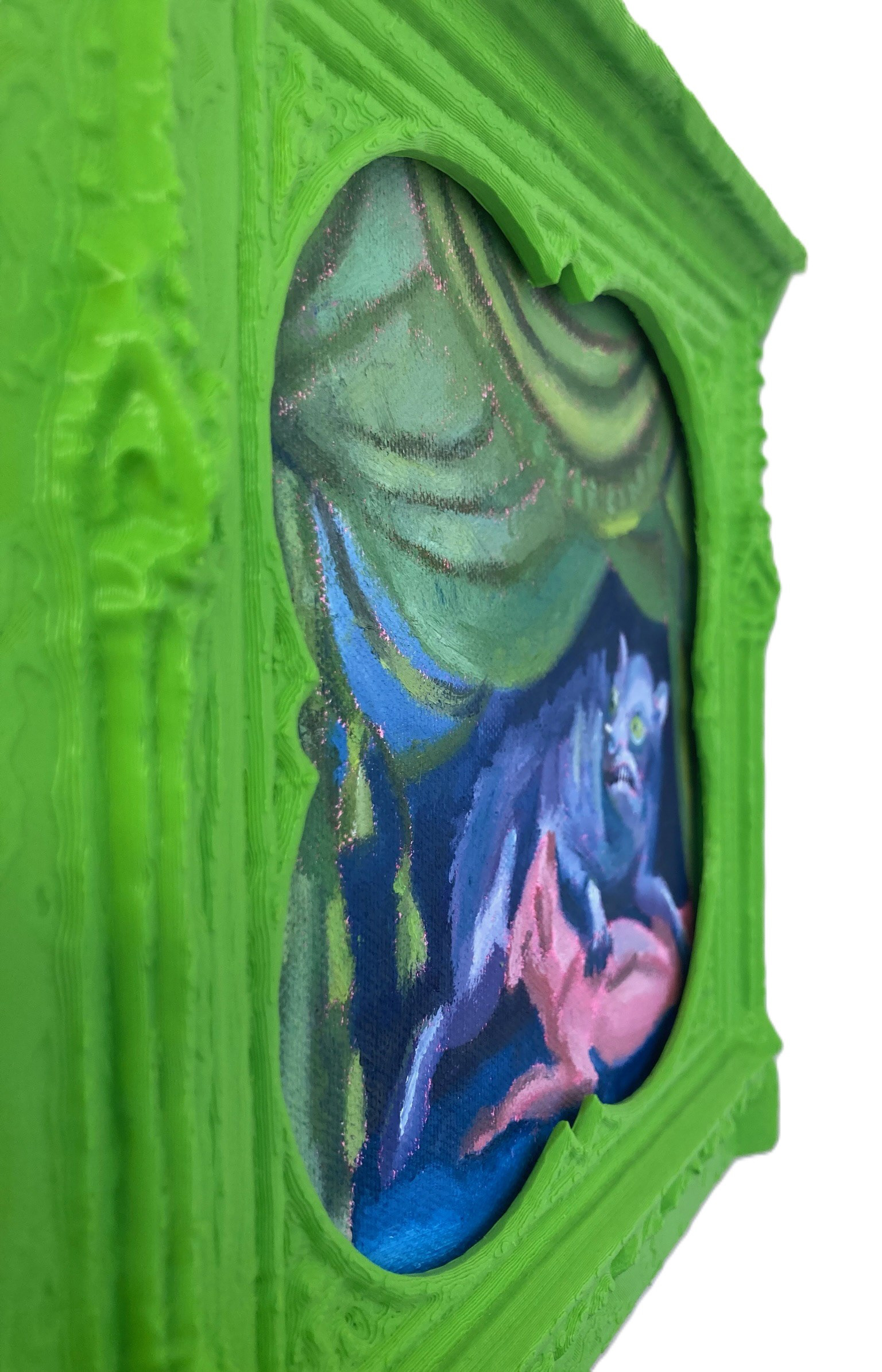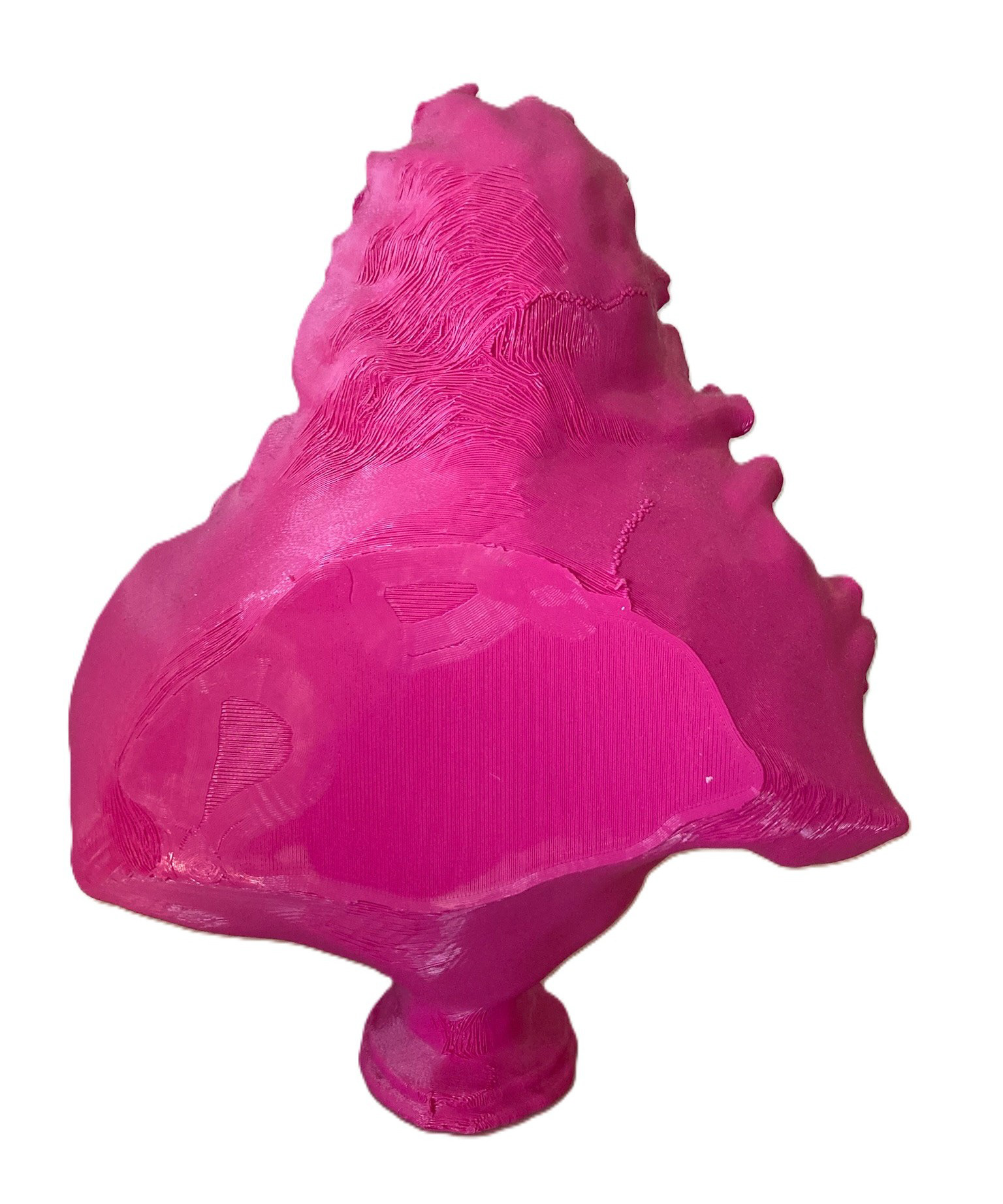A collaboration by Sara Yourist and Ana Meza
Supported by an IAS Research Grant from Indiana University
Cheap Opulence reimagines historical artifacts through a shared fascination with ornamentation, excess, and transformation. Painter Sara Yourist and sculptor Ana Meza bring digitally scanned fragments of architectural facades and historical ornament into a new space where the sacred becomes theatrical and the decorative becomes distorted.
At the heart of the show are ornate frames, many of which were created using 3D scans sourced from museum archives and historic buildings across Europe. Once scanned, the imagery becomes distorted and digitized, removing it from its original context and function. Meza digitally edits and reconfigures these fragments, transforming them into contemporary sculptures made from biodegradable PLA derived from corn. The final iteration is a mere whisper of its original counterpoint.
Yourist’s paintings are decorative and overloaded scenes filled with porcelain figures, aggravated animals, and objects caught mid-collapse. Influenced by Rococo’s extravagance and theatrical display, her work celebrates ornamentation and femininity while also unraveling their contradictions. Beneath the glossy surfaces, there is an undercurrent of gendered tension, coded desire, and collapse. Human and animal figures coexist in fragile, sometimes chaotic arrangements, suggesting entangled relationships shaped by control and artificial beauty. Nature appears not as something wild, but as something staged and strained. Beauty is seductive but unstable, more performance than truth.
A recurring form in the exhibition is based on a 17th-century Baroque frame by Antonio Carlone, found on the exterior of the Cathedral of St. Veit in Austria. In this context, it has been sliced and reworked into a visual backdrop for painted compositions, turning a once-fixed architectural flourish into a portable, theatrical device.
Together, the works in Cheap Opulence explore shifting ideas of value, access, and authorship. In 3D printed form, these artifacts might seem to outlast us, yet their biodegradable nature ensures they decompose like flesh. Their historical weight is undercut by infinite replicability. Once removed from their original sources, they become something else entirely. These miniatures lean into camp and whimsical excess, transforming historical fragments into playful performers on a global stage that begins right here in Columbus, Indiana.
This exhibition marks the beginning of an ongoing collaboration where the possibilities for reimagining history through spectacle and material transformation are limitless. Cheap Opulence doesn’t preserve history. It stages it, distorts it, and lets it shine.
